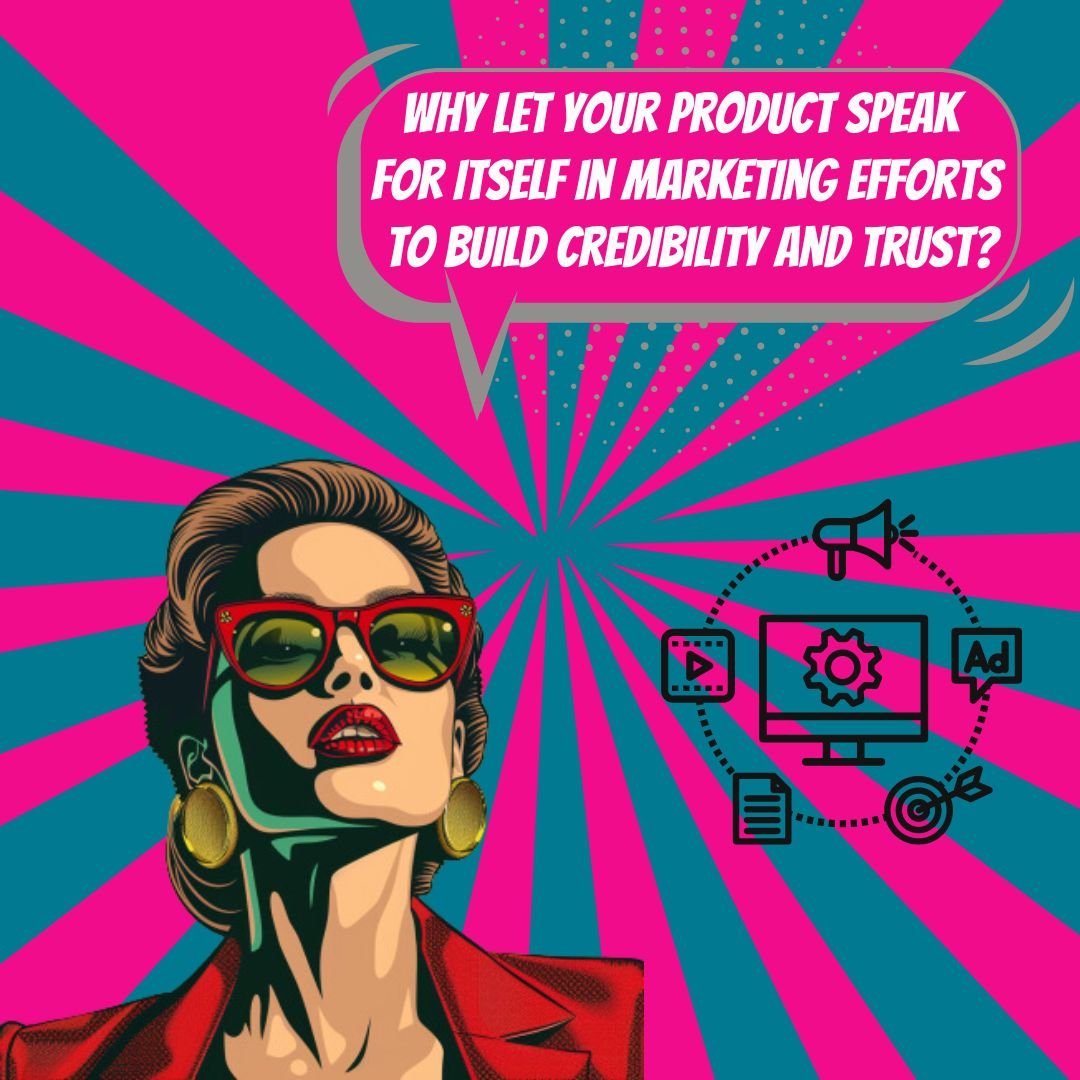Key Takeaways
✅ Highlight Unique Selling Points (USPs) and Differentiators: Identifying what sets your product apart is crucial in today’s competitive landscape. For instance, if we look at the marketing strategies behind innovative products like bulletproof jackets or strong adhesives, it's clear that emphasizing a product's unique capabilities can greatly influence customer perception and adoption. A study by the Marketing Science Institute found that products highlighting a unique feature saw an increase in sales by up to 5-10% compared to competitors. Concrete examples and storytelling can significantly boost the visibility and attractiveness of your product.
✅ Create a Compelling Narrative: Your product isn’t just an item; it’s a solution to your customer's problem. Developing a narrative that resonates with your target audience can dramatically enhance your product's market stance. According to Nielsen, 92% of consumers prefer advertisements that feel like a story. An engaging and relevant story not only captivates but also emotionally connects with the audience, differentiating your product in a crowded market. This narrative should be authentic, making your product not just seen, but felt.
✅ Demonstrate Your Product's Value: Talking about your product's features won't suffice; you need to show it in action. Demonstrations, whether live or through video, allow potential customers to see the product's benefits firsthand, greatly influencing their purchase decisions. A report by the Content Marketing Institute showed that product demos lead to a 20% conversion rate on average. Such tangible experiences make your product more relatable and trustworthy, encouraging customer engagement and ultimately, sales.

Introduction
Have you ever wondered how some products manage to stand out in a sea of alternatives? The secret lies in Product Marketing: Letting Your Product Speak for Itself. But what makes product marketing a game-changer in today's fast-paced market?
Product marketing is more than just selling; it's about creating a bond between the product and the consumer, ensuring that your product isn't just another item on the shelf but a solution to a problem. It’s about harnessing the power of unique selling points (USPs), creating compelling narratives, and demonstrating unbeatable value.
As we dive into the world of product marketing, we'll explore innovative perspectives and modern trends that can significantly maximize revenue, return on ad spend (ROAS), and return on investment (ROI). Ready to uncover actionable insights and groundbreaking information that could revolutionize how you market your products? Stay tuned, because this journey will transform your product from being just heard to being remembered.
Top Statistics
| Statistic | Insight |
|---|---|
| 95% of new products launched by established companies each year fail | This shocking number reveals the harsh reality of product marketing: without adequate testing and accurate messaging, most products are meant to fail. It emphasizes the need for a well-thought-out marketing strategy to make your product speak for itself. |
| 80% of Product Marketing Managers operate in small teams of 1-5 | This statistic sheds light on how most PMMs have to be resourceful and versatile, often doing more with less. It hints at the importance of efficiency and creativity in making a product market itself. |
| 60% of people are inspired to seek out a product after reading content about it | This underscores the power of content marketing in product marketing. An engaging story or valuable information can be just the push needed for people to act and gravitate towards your product. |
| 70% of consumers would rather learn about a brand via articles than ads | This preference for articles over ads speaks volumes about where marketers should invest their efforts. It suggests a shift towards providing value through content, allowing the product to market itself in a more organic way. |
| Humans now have an 8-second attention span | This startling fact highlights the challenge marketers face in grabbing and keeping attention. It reinforces the idea that messages must be clear, concise, and compelling to make an impact quickly. |
What Is Product Marketing?
Imagine you have the task of introducing a new gadget to the world. Your job isn't just to tell people it exists but to make sure the right people learn why they can't live without it. This is where product marketing comes in. It's all about bridging the gap between your product and potential customers. This process involves understanding deeply who your customers are, what they need, and how your product can fulfill those needs better than anything else out there. It's a blend of science and art, using data-driven insights to creatively position your product in a bustling market.
Key Components of a Product Marketing Strategy
A stellar product marketing strategy isn’t just thrown together; it’s carefully crafted. At its heart is the vision your product embodies, which should echo the bigger picture of what your company stands for. But how do you know if your vision matches what people want? That's where insights come into the picture. Insights derived from digging into market data, keeping an eye on what competitors are doing, and truly understanding your customers. With those insights, you craft your product positioning, making sure your product stands out for all the right reasons. Then, by weaving together the marketing mix—the product, its price, how you promote it, and where you sell it—you ensure each element is in harmony. What about the competition? Competitive analysis helps you to see where others are shining or falling short, letting you fine-tune how you differentiate your offer.

Product Marketing Brief: A Key Tool
When it's time to spread the word about your product, a product marketing brief is your blueprint. This document outlines who you're trying to reach, what makes your product the hero in their story, and how you're going to tell that story. By detailing the project overview, target audience, your place among competitors, and the objectives you aim to hit, you set a clear course for your marketing campaign. It’s also where you sketch out the channels you’ll use to reach your audience, matching each message to the right medium and timing.
Creating a Product Marketing Plan
Drafting a product marketing plan is like mapping your journey to a successful launch and beyond. It starts with an executive summary that sets the stage, followed by a vivid product description that highlights why your product matters. The meat of the plan involves a thorough market analysis and a keen competitor assessment, giving you the lay of the land. With that knowledge, you plot your marketing strategy, deciding how you’ll reach your audience, and predict your journey's impact with a detailed forecast and budget.
Product Marketing Goals
The compass guiding every product marketing effort points towards a set of critical objectives. Chief among these is understanding the audience. By knowing who you're speaking to, you can tailor your messaging to resonate deeply. Part of this is crafting detailed buyer personas, which help refine your tactics and make your efforts more precise. A relentless focus on competitive analysis and differentiation ensures you know how to position your product as the superior choice. Finally, effective positioning in the market is what makes all the difference, ensuring customers see your product as the answer to their needs.
Best Practices for Effective Product Marketing
For product marketing to hit the mark, it requires a perfect blend of best practices. Key among these is collaboration across teams. Product developers, salespeople, and customer support staff all have insights that can make your marketing sharper and more effective. Communication of your product’s value needs to be clear and compelling, turning features into benefits that resonate with your audience. To stay on course, you must measure and analyze the impact of your strategies, ready to pivot as you learn what works. Above all, staying agile allows you to adjust to market shifts and evolving customer needs, keeping your product marketing efforts both relevant and powerful.
AI Marketing Engineers Recommendation
Recommendation 1: Focus on User-Generated Content for Authentic Product Stories: Letting your product speak for itself means allowing those who use it to share their experiences. Data reveals that 92% of consumers trust user-generated content (UGC) more than traditional advertising, according to Nielsen. By encouraging and showcasing real stories from real users, you can create a more authentic, trust-building connection with potential customers. Consider leveraging platforms like Instagram or TikTok, where users can share their product experiences visually, adding to the perception of authenticity and trustworthiness.
Recommendation 2: Invest in Product-Led Growth Strategies: Turning your product into your main marketing tool requires a product-led growth (PLG) approach. This strategy prioritizes product experience to drive growth — essentially making the product itself the main conduit for acquiring, activating, and retaining customers. With a reported 70% of SaaS companies now adopting a PLG model (according to OpenView Partners), it's clear that allowing your product to take center stage can lead to lower customer acquisition costs and higher retention rates. Start by optimizing your product for virality, ensuring it's easy to share and recommend, and by harnessing in-product prompts that encourage users to invite others.
Recommendation 3: Leverage Augmented Reality (AR) for Immersive Demonstrations: An innovative way to let your product speak for itself is through augmented reality (AR) demonstrations, which have been shown to increase user engagement and conversion rates. AR allows potential customers to experience your product in a contextual or personalized manner, bridging the gap between digital content and the real world. For instance, statistics from Shopify indicate products showcased in AR lead to a 94% higher conversion rate than products without it. Implementing AR features on your website or app can offer a tangible feel of the product to consumers, fostering a deeper understanding and connection, ultimately driving sales.
Conclusion
In a world where products are abundant and choices are limitless, the art of product marketing has never been more crucial. At its core, product marketing is about bridging the gap between your product and the people who will come to rely on it. This journey begins with a deep understanding of who your customers are, along with a clear vision of why your product matters in a crowded space. Through strategic positioning, leveraging insights, and employing a well-considered marketing mix, you can ensure that your product doesn't just enter the market but makes a lasting impression.
The key components of a successful product marketing strategy are not just steps to be checked off a list; they are the ingredients for constructing a narrative that positions your product not just as an item to be purchased, but as a solution to be embraced. From the crystallization of vision to the execution of a marketing plan that covers every aspect of the product journey, every element is a testament to the value your product brings to the table.
Moreover, the role of a product marketing brief and a meticulously crafted marketing plan cannot be understated. These are not mere documents, but blueprints that guide your strategy, ensuring that every marketing effort aligns with your objectives and speaks directly to your target audience. And remember, the heart of effective product marketing lies in differentiation and positioning—making sure that your product stands out for all the right reasons.
Entering the market with a product is a journey filled with challenges and opportunities. The question then becomes, how will you let your product speak for itself? Embrace the pillars of product marketing—understand your audience, differentiate, and position your product strategically—and you'll find your path to success. With the right approach, your product can transcend being just another item on the shelf. It can become a story, a solution, and a success. Are you ready to let your product do the talking?
FAQs
Question 1: What is Product Marketing?
Answer: Product Marketing is all about making sure the right people hear about a product and get why it's worth their time. It's the job of the Product Marketing Manager (PMM) to shout from the rooftops about how awesome this product is and make sure it finds its way into the right hands.
Question 2: Why are you interested in Product Marketing?
Answer: This is all about what lights a fire in your belly when it comes to Product Marketing. What's the spark that makes you want to jump into this world?
Question 3: What are the main skills and responsibilities of a Product Marketer?
Answer: A Product Marketer is a bit like a swiss army knife – equipped with a bunch of skills ranging from communication, creativity, to deep-dive analysis. They're the bridge between the product and the world, making sure everyone understands and loves the product.
Question 4: How would you describe our product?
Answer: This is your chance to show you've done your homework and can see what makes the product special – or if you're cheeky, what could make it even better.
Question 5: What do you like/dislike about our product and why?
Answer: Here, it's all about honest feedback. What makes you excited about the product, and what bits make you think, "Hmm, could do with a tweak"?
Question 6: How would you improve engagement and retention of a product?
Answer: This is the magic question about keeping customers hooked and coming back for more. What secret sauce would you add to keep users engaged and loyal?
Question 7: Can you think of an example where a company successfully transitioned from focusing on Awareness to Engagement and Retention, and ultimately, Expansion?
Answer: We're looking for a storytime answer here – a real-world Cinderella story where a brand made it big by smartly moving its focus as it grew.
Question 8: How can Product Marketers contribute to product-led growth (PLG)?
Answer: It's all about how a Product Marketer can be the secret weapon in making a product so good it sells itself.
Question 9: How can Product Marketers balance short-term and long-term goals in their product adoption strategies?
Answer: This one's a tightrope walk – how do you juggle making a splash now with the big dreams for the future?
Question 10: What role can customer feedback play in post-launch Product Marketing?
Answer: Here, it's about listening. How can what customers are saying shape the journey of a product after it hits the market?
Question 11: Tell me about a time when you revived a struggling marketing campaign or project.
Answer: Time for a comeback story! When have you turned a sinking ship into a soaring success?
Question 12: How do you identify and inform product and marketing opportunities?
Answer: This is about spotting the diamonds in the rough – how do you see the opportunities that others miss?
Question 13: Can you walk me through your last product launch?
Answer: Let's dive into the battle stories – what was it like in the trenches of launching a product?
Question 14: How do you measure the success of Product Marketing?
Answer: Success can mean different things to different people. How do you put a number or a story to success in Product Marketing?
Question 15: What are some ways you build relationships with fellow employees?
Answer: No one's an island, especially in marketing. How do you make friends and influence people in the office?
Question 16: Can you talk about a cross-functional project that you worked on? What was your role and how did you contribute to the impact and/or success of the project?
Answer: This is about playing well with others, bringing different talents together to make something amazing.
Question 17: Tell me about a time when you were able to influence a decision made by another leader.
Answer: Ever convinced someone in the captain's chair to change course? Here's the time to share that tale.
Question 18: What do you know about our company's target audience?
Answer: Do you get who we're chatting to? This is your chance to show you know who's out there listening.
Question 19: What markets or industries have you focused on, and in how are those similar to or different from ours?
Answer: Where have you been playing, and how does that playground compare to ours?
Question 20: What's the project you're most proud of and why?
Answer: Shine a spotlight on your shining moment – what's given you those "proud parent" feels?
Question 21: You launch a new feature and there is low adoption. What do you do?
Answer: The feature's out there, but the fans aren't biting. How do you turn that frown upside down?
Academic References
- Aaker, D. (1996). Building Strong Brands. New York, NY: Simon & Schuster. This seminal book delves into the critical role of brand strength in product marketing, offering a comprehensive guide to crafting, executing, and maintaining successful brand strategies.
- Aaker, D. A., & Jacobson, R. (1994). “The Financial Information Content of Perceived Quality.” Journal of Marketing Research, 31(2), 191-201. This study provides an in-depth examination of how perceived quality influences consumer decision-making and financial outcomes for brands.
- John, L., Norton, M., & Garcia-Rada, X. (2022). “Latest Isn’t Always Greatest: Why Product Updates Capture Consumers.” Journal of Marketing. This research uncovers the psychological mechanisms behind consumer attraction to new product updates, even when they offer minimal improvements over previous versions.
- Dolan, R. (2021). “Peloton Changed the Exercise Game. Can the Company Push Through the Pain?” Harvard Business Review. This case study investigates Peloton's strategic response to the challenges of product innovation and market adaptation in a highly competitive sector.
- Wu, A., & Peterson, A. (2020). “For Entrepreneurs, Blown Deadlines Can Crush Big Ideas.” Harvard Business School Working Paper. This paper highlights the critical importance of timeline management in product upgrades and launches, offering valuable lessons for start-ups navigating complex development processes.
- Amano, T. (2019). “Don’t Turn Your Marketing Function Over to AI Just Yet.” Harvard Business Review. This insightful study cautions against the hasty adoption of AI in marketing, promoting a balanced approach that leverages both AI capabilities and human intuition.
- Vettese, A. (2019). “Lipstick Tips: How Influencers Are Making Over Beauty Marketing.” Journal of Marketing Trends. This research shines a light on the transformational role of influencers in the beauty industry, dissecting how they affect consumer preferences and sales.
- Thomke, S. (2018). “The Ferrari Way.” Harvard Business School Case Study. This case study explores Ferrari’s unique product marketing strategies that defy conventional wisdom, securing its position as a top luxury brand.
- Avery, J. (2017). “Does Le Pliage Help or Hurt the Longchamp Luxury Brand?” Harvard Business Review. This study debates the implications of accessible luxury items on brand perception and market positioning within the high-end sector.
- Deighton, J., & Sorrell, S. (2017). “The Revolution in Advertising: From Don Draper to Big Data.” Marketing Science Institute Podcast. This discussion encapsulates the evolution of advertising from creative-centric to data-driven approaches, pinpointing the critical roles of data analysis in modern product marketing.











